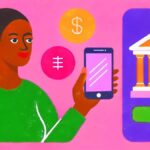🎓 Introduction: The Hope Behind Loan Forgiveness
For millions of Americans, student loans have been both a ticket to higher education and a long-term financial burden. As of 2025, U.S. student loan debt surpasses $1.7 trillion, affecting more than 43 million borrowers.
The idea of loan forgiveness — wiping away part or all of that debt — has become a major topic in both politics and personal finance.
If you’ve been wondering whether you can qualify for student loan forgiveness or what has changed in 2025, this guide breaks it down simply. You’ll learn who qualifies, how to apply, and what each program really means for your financial future.

💡 What Is Student Loan Forgiveness?
Student loan forgiveness means the government or your loan servicer cancels part or all of your remaining student loan balance. It’s usually available only for federal student loans, not private loans.
Forgiveness can happen through:
- Public service work
- Teaching or nonprofit employment
- Long-term repayment under income-driven plans
- Special federal relief programs (like those introduced by the Biden administration)
The goal is to help borrowers who’ve repaid responsibly for years or who serve their communities in essential jobs.
🏛️ The State of Loan Forgiveness in 2025
The past few years have been turbulent for student loan borrowers. Court rulings, political debates, and new Department of Education rules have all shaped the current system.
As of 2025:
- The original Biden mass forgiveness plan (up to $20,000) was blocked by the Supreme Court in 2023.
- However, the administration introduced targeted relief programs through the Department of Education, using existing laws to cancel debts for specific groups.
- Over 4 million borrowers have now received some level of debt cancellation through these new measures.
So, while there’s no “blanket forgiveness” for everyone, there are still multiple paths to reduce or erase your student debt.
🧾 1. Public Service Loan Forgiveness (PSLF)
What It Is
PSLF is one of the oldest and most reliable programs. It forgives the remaining balance on Direct Loans after 120 qualifying payments (about 10 years) while working full-time for a government or nonprofit employer.
Who Qualifies
- Federal, state, local, or tribal government employees
- Employees of 501(c)(3) nonprofits
- Teachers, nurses, firefighters, and public health workers
How to Apply
- Enroll in an income-driven repayment (IDR) plan
- Make 120 qualifying payments
- Submit the PSLF form annually at studentaid.gov/pslf
Tip: Even if you changed jobs or paused payments, the Department of Education now counts certain forbearance and deferment periods toward PSLF — thanks to the new 2024 “PSLF Simplification” rule.

📚 2. Teacher Loan Forgiveness
If you teach full-time for five consecutive years in a low-income school or educational service agency, you may qualify for up to:
- $17,500 in forgiveness for math, science, or special education teachers
- $5,000 for other subject areas
To check if your school qualifies, visit the Teacher Cancellation Low Income Directory at studentaid.gov.
This program can also combine with PSLF, giving teachers a chance for maximum relief after years of service.
💼 3. Income-Driven Repayment (IDR) Forgiveness
What It Is
IDR plans link your monthly payment to your income and family size. After 20 or 25 years of payments, the remaining balance is automatically forgiven.
The 2025 Update: SAVE Plan
The SAVE (Saving on a Valuable Education) plan, launched in 2023 and expanded in 2024–2025, replaced the old REPAYE plan.
It’s now considered the most generous IDR plan ever.
Key Benefits
- Payments capped at 5–10% of your discretionary income
- No interest growth as long as you make payments
- Forgiveness after 10 years for borrowers with under $12,000 in loans
You can apply for the SAVE plan directly at studentaid.gov/idr.
💰 4. Borrower Defense to Repayment
This program is designed for students who were misled by their schools — for example, fake job placement rates or false accreditation claims.
You May Qualify If:
- Your school closed suddenly
- You were misled about job prospects or program quality
- You attended a for-profit school later sued by the government (e.g., Corinthian Colleges, ITT Tech)
How to Apply
Submit a claim online via the Borrower Defense portal at studentaid.gov/borrower-defense.
Approved borrowers can have 100% of their loans forgiven, plus refunds for payments already made.

🧍 5. Total and Permanent Disability (TPD) Discharge
If you’re permanently disabled, you may qualify for a complete discharge of your federal student loans.
The Department of Education now automatically matches data with the Social Security Administration (SSA) and Department of Veterans Affairs (VA) to identify eligible borrowers.
No application is required if your disability is already recognized by those agencies.
⚖️ 6. Closed School Discharge
If your school shut down while you were enrolled (or shortly after you left), you could be eligible for a Closed School Discharge.
- Covers loans taken for that specific institution
- Typically provides 100% cancellation of your loan balance
You can check eligibility at studentaid.gov/closedschool.
🏡 7. Perkins Loan Cancellation
Though new Perkins Loans stopped in 2017, some borrowers still qualify for partial forgiveness based on employment, such as:
- Teaching in low-income schools
- Working in public service or nursing
- Military service
Forgiveness rates can range from 15% to 100% of your balance depending on years of service.
🕒 8. Temporary and “One-Time” Relief Programs (2024–2025)
In 2024, the Biden administration introduced a new round of targeted relief for specific groups:
- Borrowers with older loans under 20 years
- Those in IDR plans who were not properly credited
- Borrowers in financial hardship
These adjustments continue through 2025 and could benefit millions of borrowers automatically, without requiring new applications.
You can verify your eligibility using your Federal Student Aid (FSA) account.
💻 How to Apply for Student Loan Forgiveness (Step-by-Step)
- Log in to your Federal Student Aid (FSA) account → studentaid.gov
- Check your loan type (Direct, FFEL, Perkins, etc.)
- Select the forgiveness program that fits your situation
- Submit the required form online
- Monitor your email for updates from your loan servicer
Tip: Always use official .gov websites — avoid scammers promising “guaranteed forgiveness” for a fee.
📊 Impact of Loan Forgiveness on Your Credit and Taxes
Credit score: Loan forgiveness itself does not harm your credit, but closing accounts may slightly adjust your score.
Taxes: Most forgiven federal student loans are tax-free through at least 2025, under the American Rescue Plan Act.
However, check your state tax laws, since a few states still treat forgiven debt as taxable income.
💬 Critics vs. Supporters: The Debate Around Forgiveness
Loan forgiveness is a politically divisive issue.
Supporters argue that:
- relieves economic pressure on middle-class Americans.
- It boosts spending and homeownership.
- It corrects decades of predatory lending practices.
Critics counter that:
- It’s unfair to those who already repaid their loans.
- It doesn’t fix the root problem — rising college costs.
- It may increase inflation or national debt.
Regardless of politics, the demand for student debt relief continues to shape U.S. education and economic policy.
🌱 How Loan Forgiveness Affects Your Financial Future
If your debt is forgiven, that’s more than just a relief — it’s a chance to rebuild your financial stability.
Here’s how to use that opportunity wisely:
- Start saving what you used to pay monthly toward an emergency fund.
- Invest in retirement accounts or low-risk funds.
- Avoid new high-interest debt (credit cards, personal loans).
- Track your credit to ensure your loan closure is reported accurately.
Forgiveness should be the start of your next chapter, not the end of your financial journey.
❓ Frequently Asked Questions (FAQ)
1. Can private student loans be forgiven?
No. Forgiveness programs apply only to federal student loans. However, some private lenders offer hardship or settlement options — contact them directly.
2. How long does it take to get loan forgiveness?
It depends on the program. PSLF takes about 10 years, IDR plans up to 20–25 years, and special relief programs can take a few months once approved.
3. Do I have to pay taxes on forgiven loans?
Through December 31, 2025, federally forgiven loans are not taxable income under federal law.
4. What happens if my forgiveness application is denied?
You can appeal or reapply. Often, missing documentation or wrong loan types cause denials — check with your servicer.
5. Will there be new forgiveness programs in 2025?
Possibly. The Department of Education continues to expand targeted forgiveness, so always check official updates on studentaid.gov.
🧭 Final Thoughts
Student loan forgiveness in 2025 isn’t a one-size-fits-all solution — but it’s more accessible than ever. Whether through PSLF, IDR, or special relief programs, millions of Americans are finding real ways to lighten the weight of student debt.
The key is to understand which program fits you, apply through official channels, and stay informed as new policies roll out.
Debt freedom may not happen overnight, but with patience and planning, it’s closer than you think.


